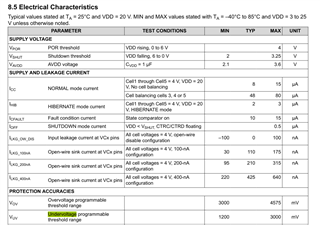Other Parts Discussed in Thread: UCC27517, BQ77307, BQ76922
Tool/software:
Hi Team,
We have developed 12V BMS using BQ7791506 for 40AH Starter Battery in Vehicle. But during Cranking, the BMS is not allowing required Cranking Current. So that we tried to change current resistors ( presently 1mohm in 3 parallel R17, R18, R19) by adding more current resistors. But current is not increasing. The required Cranking Current is approximately 400A+. Discharge Gate Resistors are R21 -10K and R23-R27 - 130E and Charge Resistors are R37-4.7K and R32-R36 - 130E. I have attached the MOSFET (TO-263) datasheets and Schematic. So please check and give the suggestions to resolve this issue.
Thanks,
Jaya PrasadSPN04200.pdf40AH BMS Schematic.pdf



